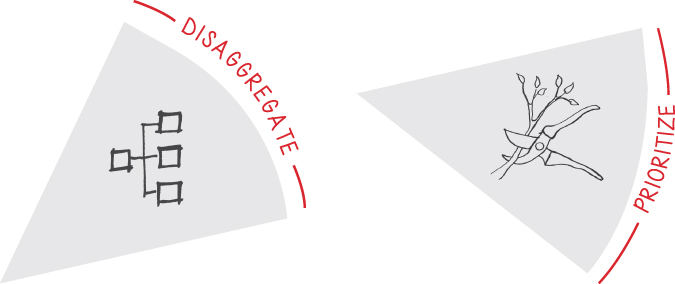Chapter ThreeProblem Disaggregation and Prioritization

Introduction
Good problem disaggregation is at the heart of the seven steps process. Any problem of real consequence is too complicated to solve without breaking it down into logical parts that help us understand the drivers or causes of the situation. So this is the most important step in problem solving: taking the problem apart in a way that helps us see the potential pathways to solve it. At the same time, when we can see all the parts clearly, we can determine what not to work on, the bits that are either too difficult to change, or that don't impact the problem much. When you get good at cleaving problems apart, insights come quickly. The magic comes in seeing which type of logic tree makes an elegant solution more obvious. It is like a plan to cut a diamond—doing it the right way really matters.
The diamond‐cutting analogy is fun. But there is a risk in it. It makes the problem of cleaving seem too difficult, like it is a task for experts only. In truth, any of us can get started with an online literature review of the facets of the problem to generate ideas. This brainstorming on the shape and elements of the problem leads to an elemental logic tree to begin to cleave the problem open.
In this chapter we will cover the use of logic trees to disaggregate problems, keep track of the parts for analysis, and build ...
Get Bulletproof Problem Solving now with the O’Reilly learning platform.
O’Reilly members experience books, live events, courses curated by job role, and more from O’Reilly and nearly 200 top publishers.

